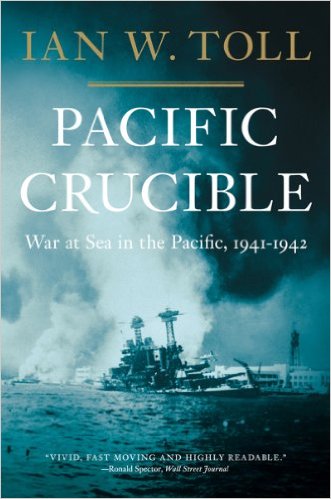My interest in America’s Pacific War (1941-1945) began in elementary school. One of our readers included the story of Jimmy Doolittle’s Tokyo Raid. I was captivated by the stunning story of 16 Army B-25 Mitchells that were outfitted for this unique objective and flown by specially trained crews. Launched from an American aircraft carrier that had slipped to within several hundred miles of Japan’s coast, the odds of survival were slim.
Theirs was a no-return mission. After dropping their bombs, the crews headed for destinations in China and Russia, harrowing escape attempts that led to freedom for some, and prison, torture, and death for others.
Doolittle’s Raid came less than six months after Pearl Harbor. The enemy was caught off guard and given a foretaste of the nightmare to come. American morale, which was at a low point, soared.
One of the captured flyers, Jacob DeShazer, obtained a Bible while in prison and through his reading was converted to the Christian faith. At the war’s end, he was released and came back to America, only to return to Japan to serve as a missionary for three decades. Mitsuo Fuchida, the flight leader who led the Japanese attack on Pearl Harbor, was converted to Christianity under DeShazer’s ministry.
Ian W. Toll’s Pacific Crucible: War at Sea in the Pacific, 1941-1942 is a compelling account of the story of Dolittle’s Raiders and the many other momentous events of the war’s opening months. He sifts through the personal experiences of President Roosevelt and his top military advisors, as well as the sailors, airman, soldiers and Marines who defended our nation and who fought desperately just to stay alive. Thoughtful consideration is given to the war as experienced by Japan’s leaders and people.
This first of three volumes covers the war from Pearl Harbor to Midway.
About the Battle of Midway – fought June 4-6, 1942 – and America’s sinking of four Japanese aircraft carriers, a military setback from which Japan never recovered, Toll observes:
In the American view, Midway eliminated the risk of a Japanese attack on Hawaii or the west coast of North America. As important, it relieved political pressure on FDR to transfer a greater share of forces to the Pacific, freeing him to emphasize his great priority, which was to keep the Soviet Union in the war against Germany. In that sense, the Battle of Midway ratified and confirmed the vital ‘Europe-first’ strategy. For that reason, it ranks as one of the most essential events of the Second World War, bearing not only on the conflict in Pacific but on the fate of Nazi Germany. (479)


1 Comments
Only 6 months between the attack on Pearl Harbor and the Doolittle raid. It’s amazing how quickly the US of A could act then and how slowly we can make decisions and act on them now.